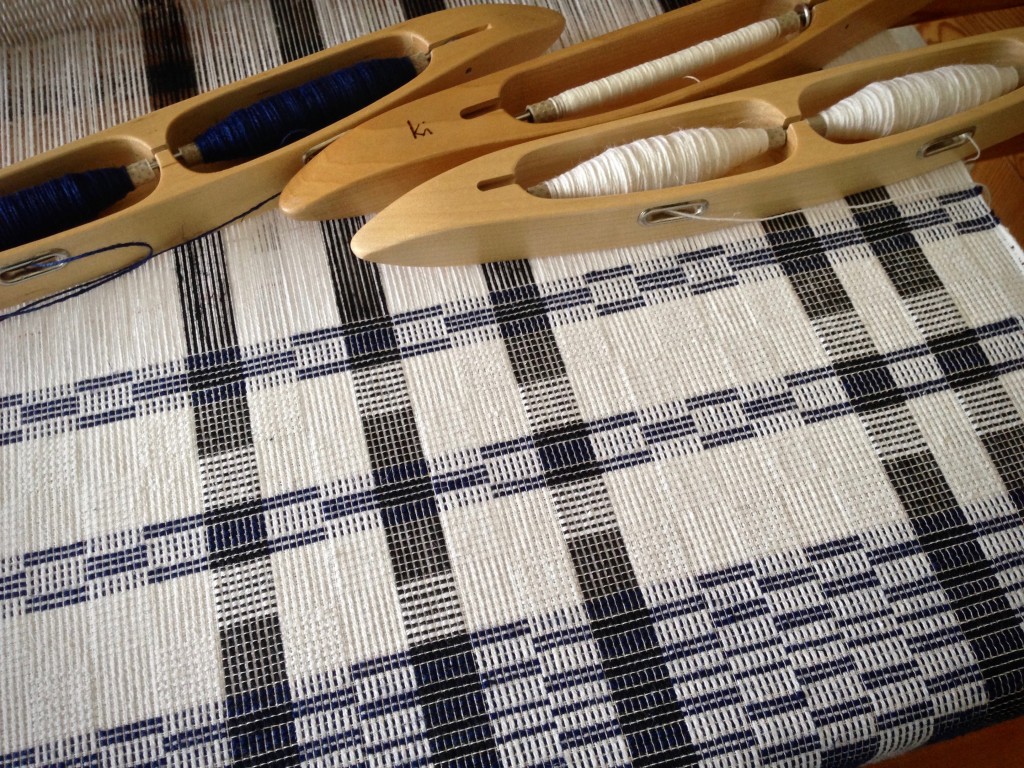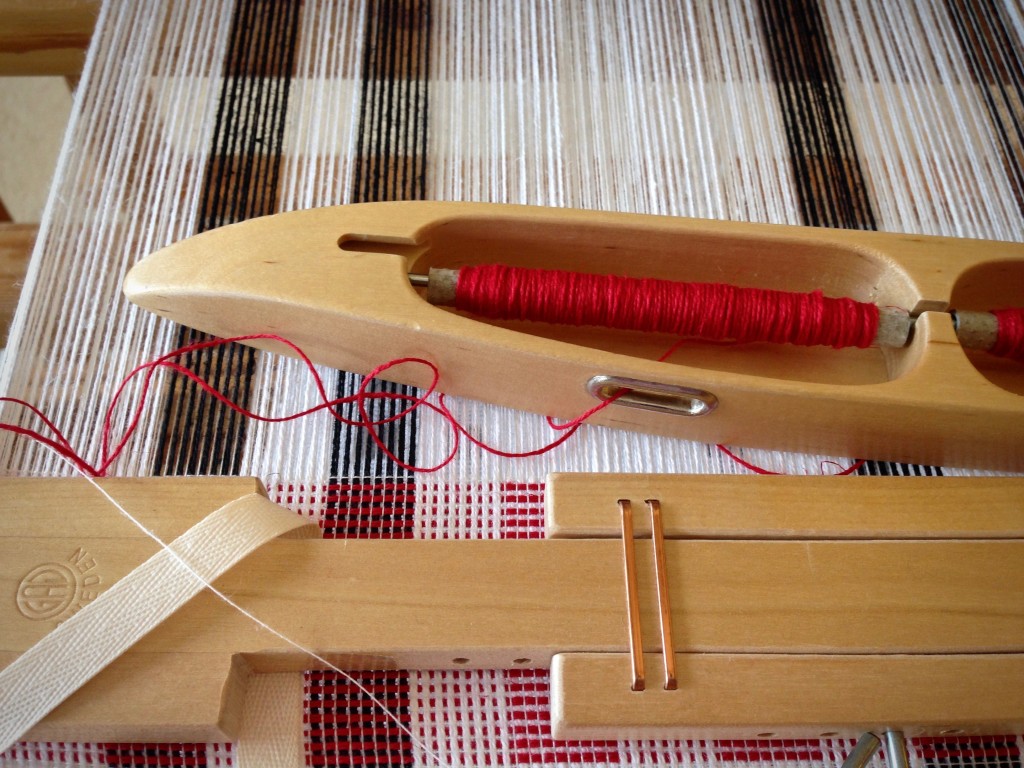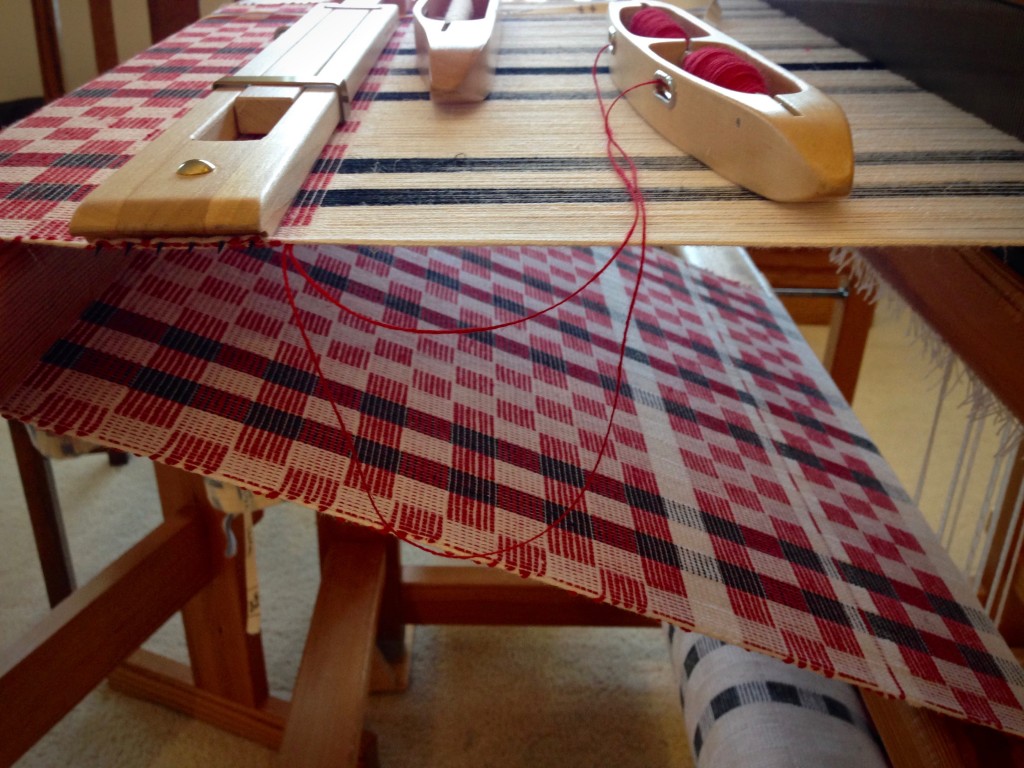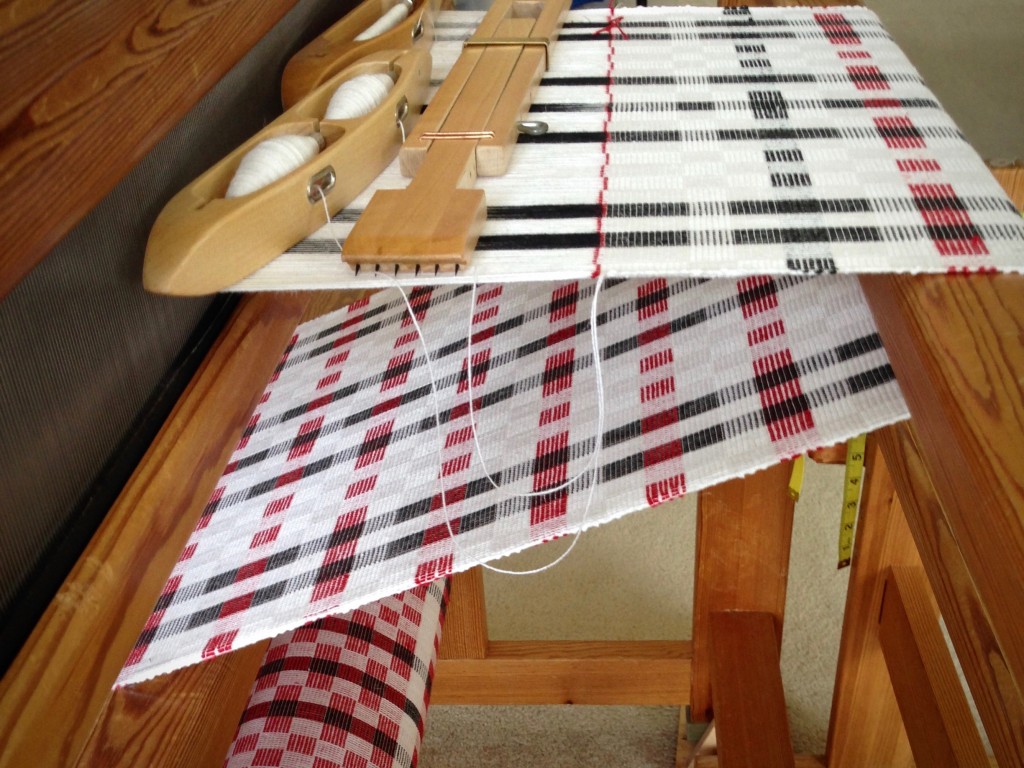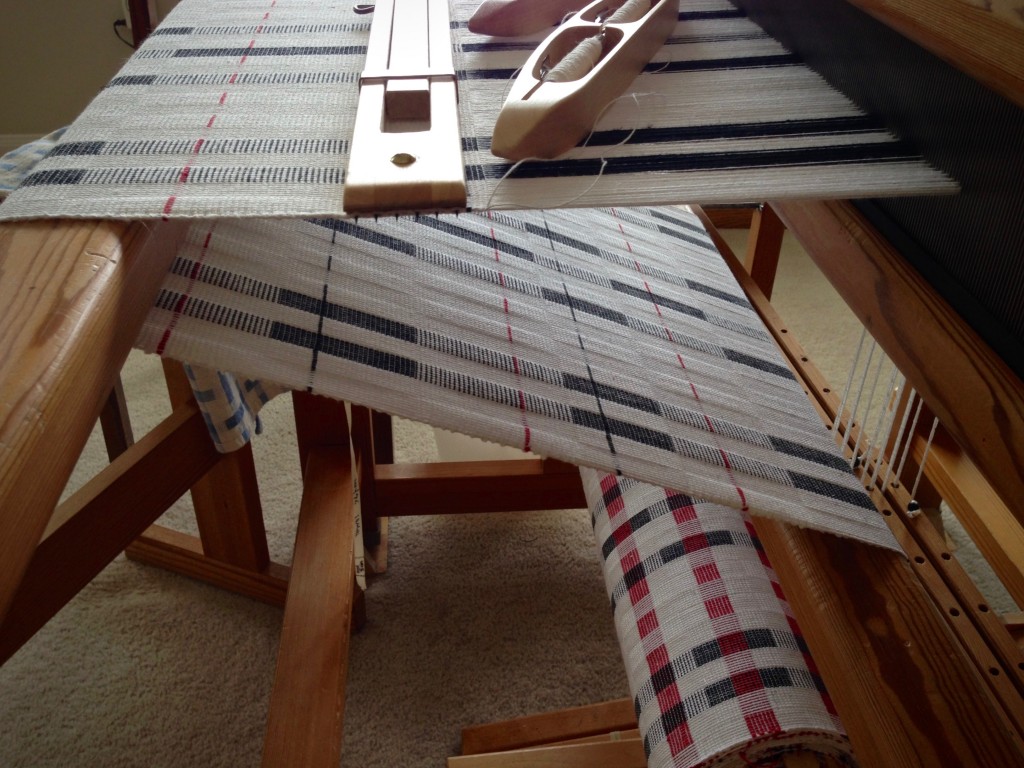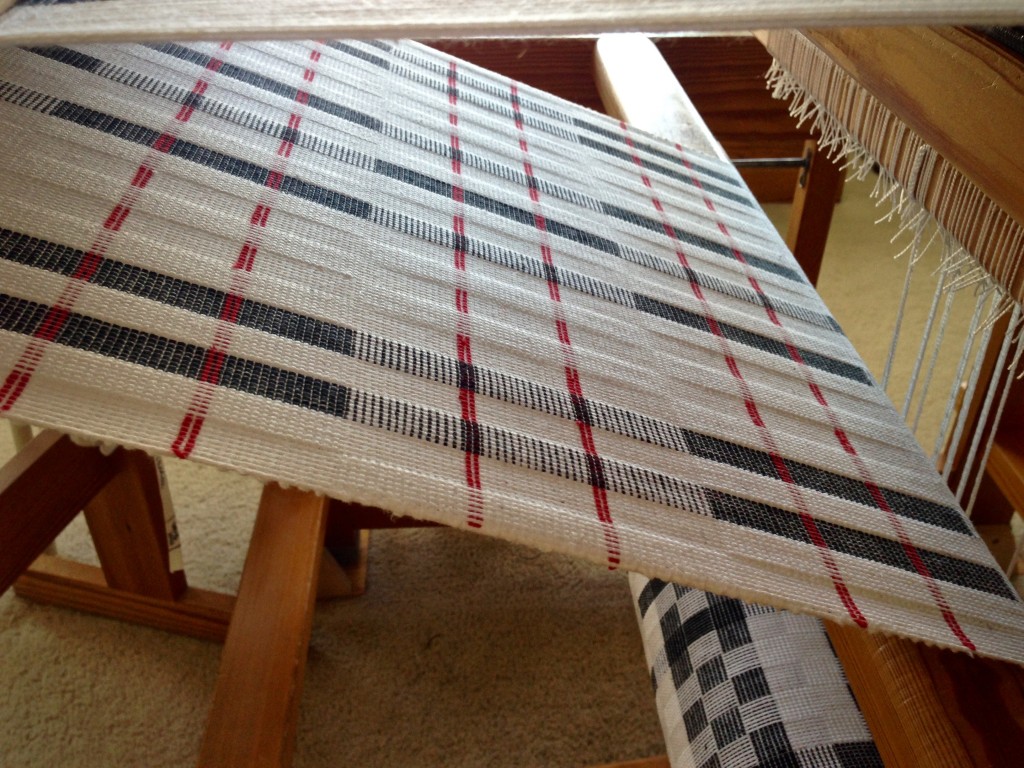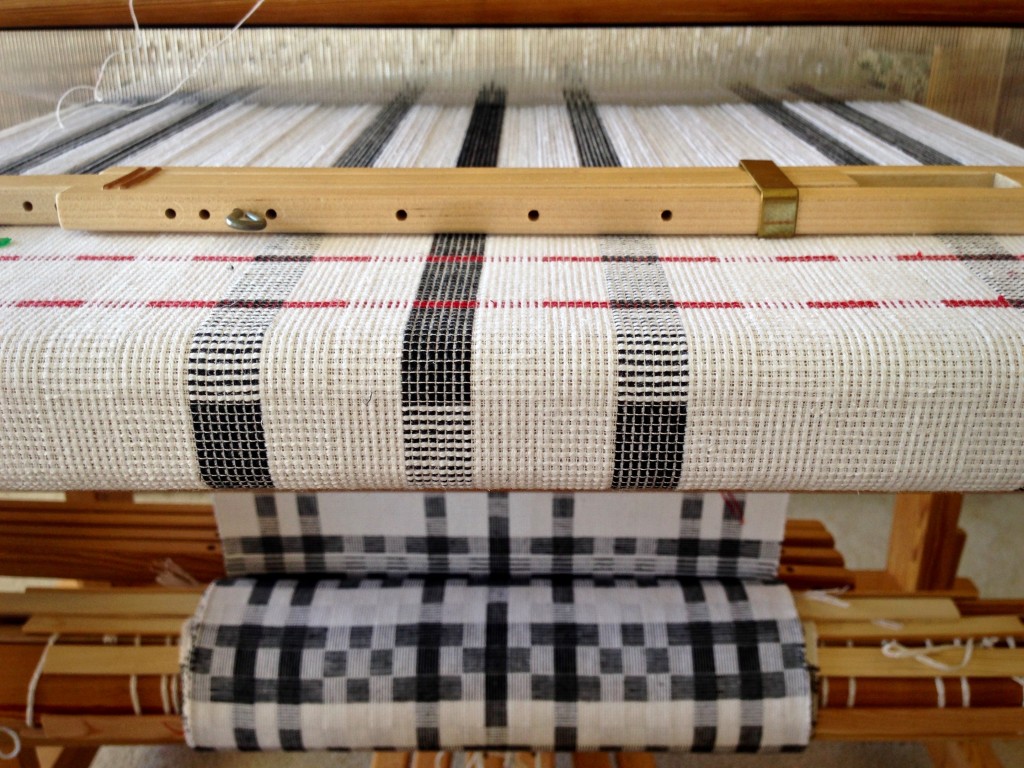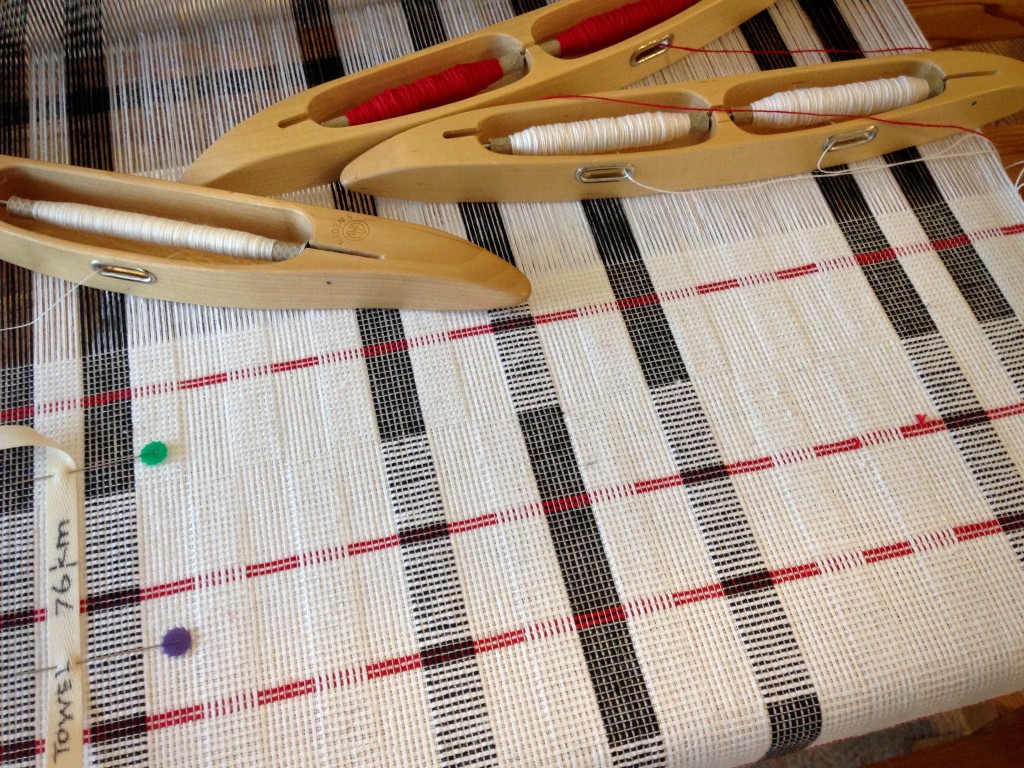This table runner is the last item on the zebra warp; and I am pausing before I tackle the ending. I like how the woven checkerboard underneath shows when you look through the warp! With the end of the warp just ahead I am wondering, “How many more centimeters can I weave?” (Read about the Zebra Warp.)
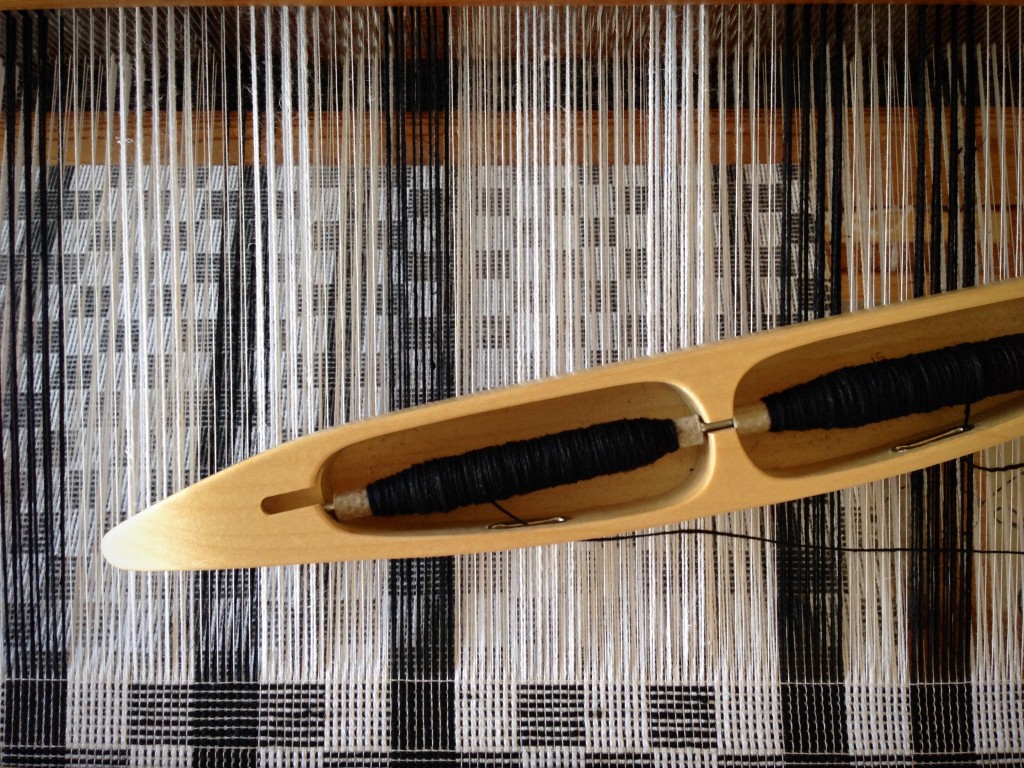
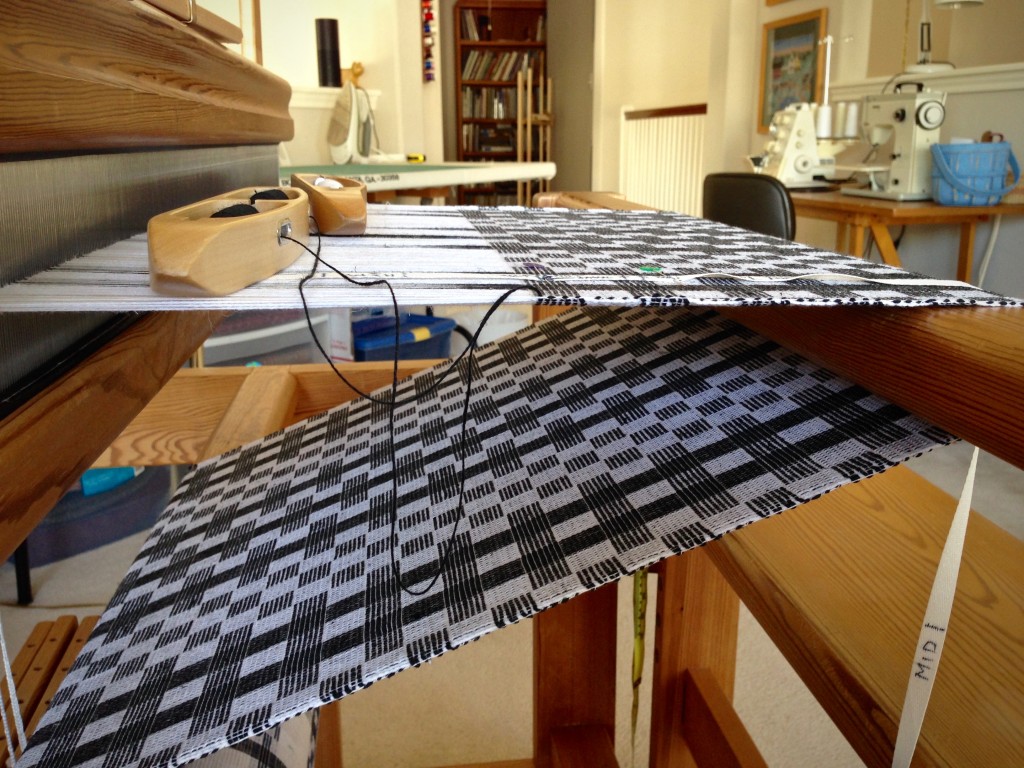
There is a potential hazard at the end of the warp. I want the final border of this table runner to match the border at the beginning. If I start the border too soon, good warp goes to waste, unwoven at the end. But if I start the border too late, I may have trouble finishing it. The shed height begins to diminish as the warp nears the end, until the shed finally becomes too short for a regular boat shuttle to pass through. (I have been known to gingerly “squeeze” and jiggle the shuttle through for the last few picks.)
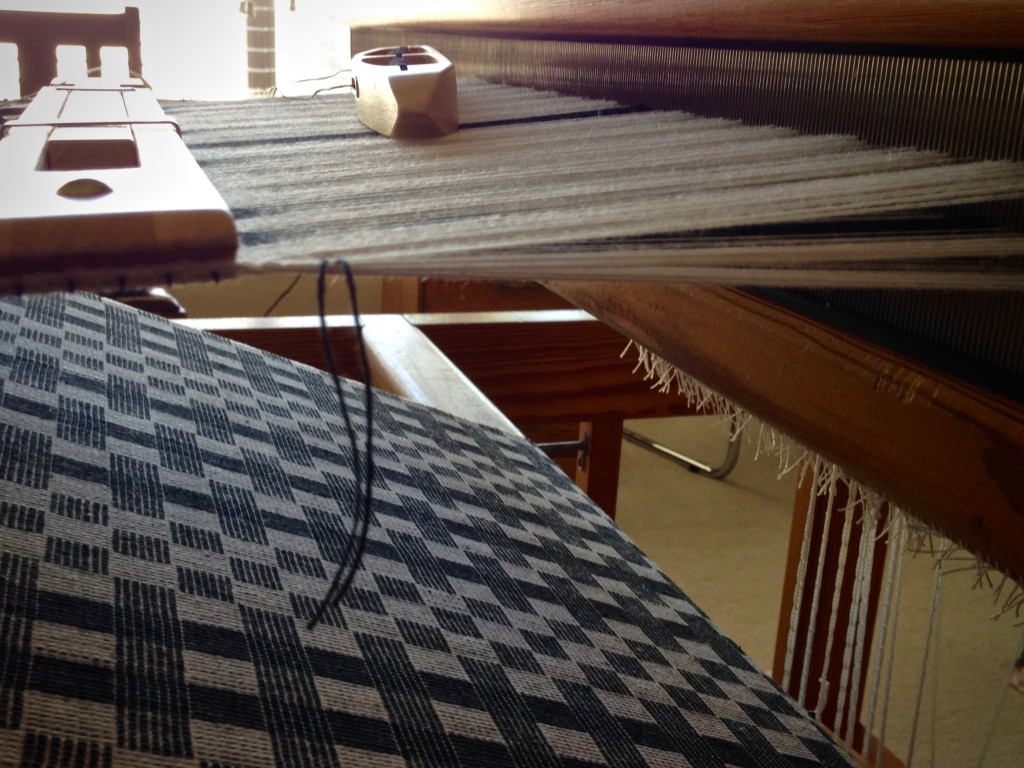
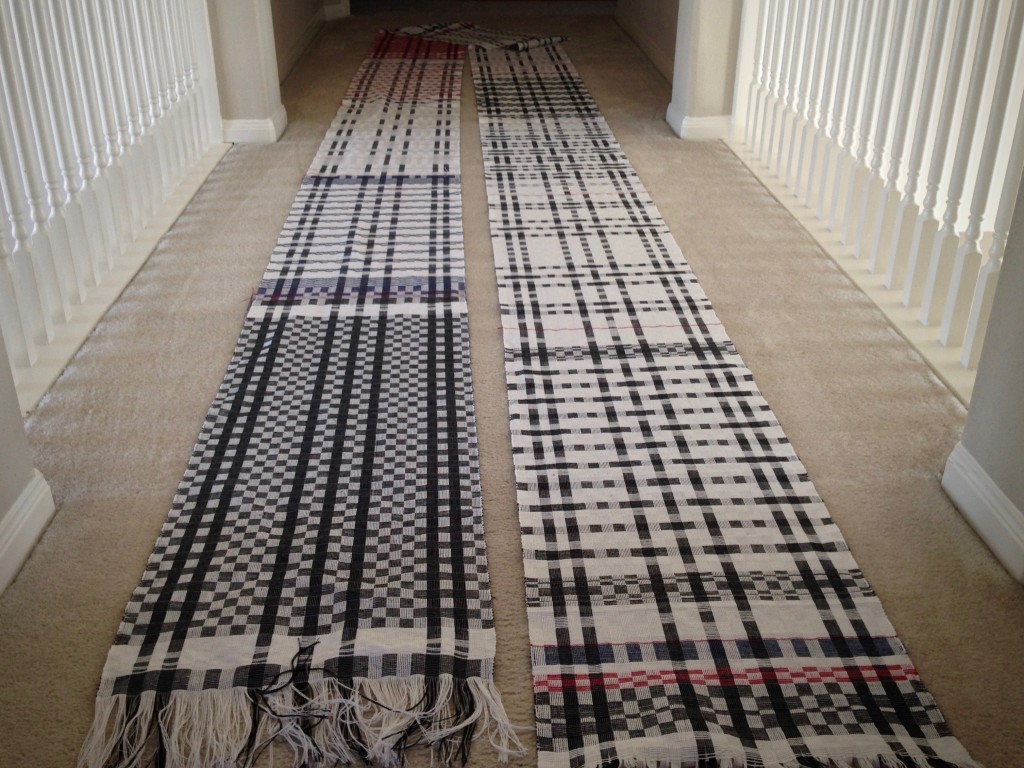
Long before I start weaving the border, I am committed to finish, no matter how tight a shed I face at the end. I made that decision when I dressed the loom with this zebra warp way back when. Following Jesus is like that. It’s more than tagging along. It’s total commitment all the way to the end.
May you see where you’ve been as you look ahead.
Happy weaving,
Karen

